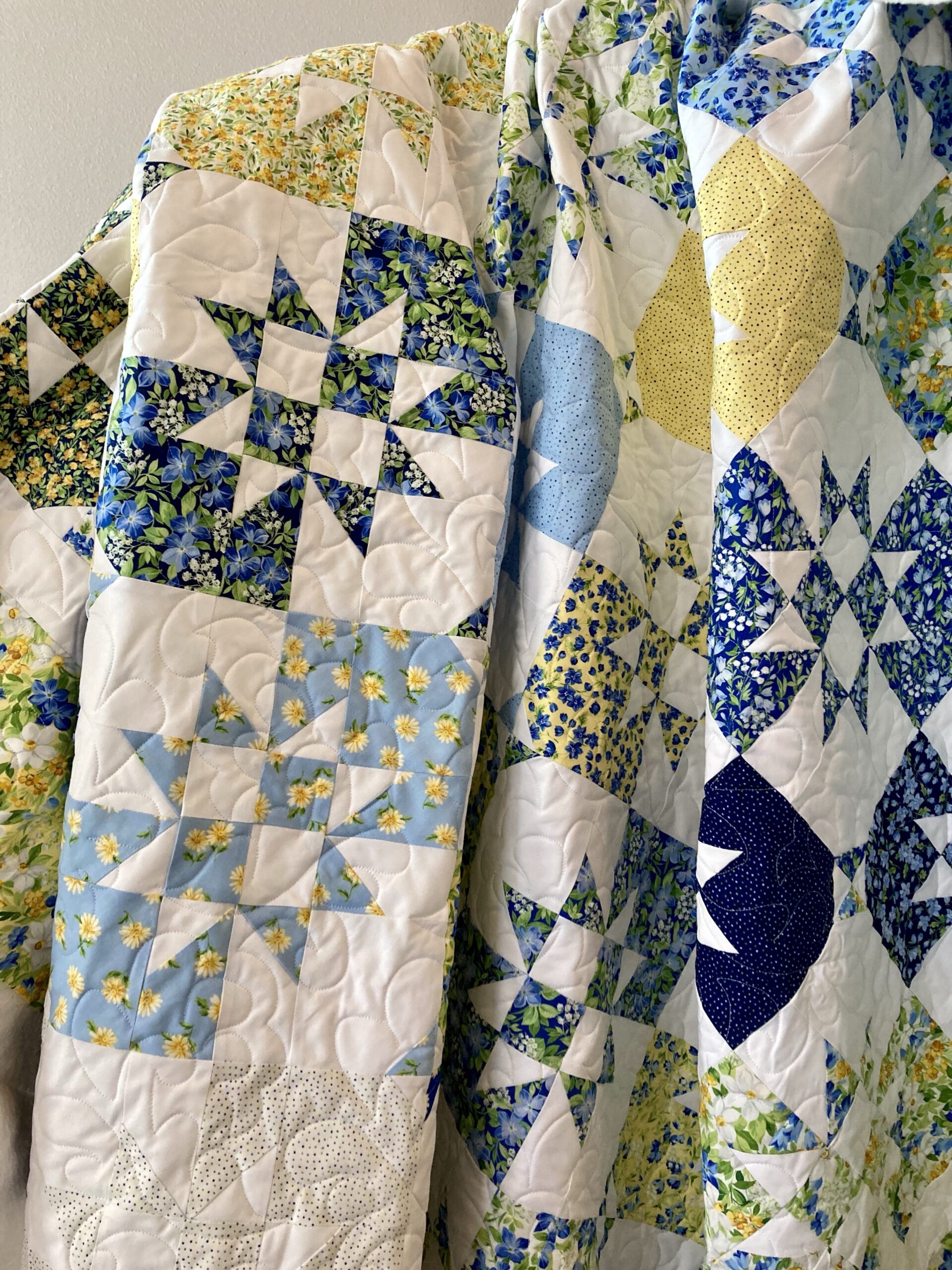Artificial intelligence (AI) is revolutionizing industries worldwide, and quilting is no exception. From AI-generated quilt designs to automated stitching, technology is changing how quilts are created, marketed, and even personalized. While some quilters embrace these advancements, others worry about the impact on traditional craftsmanship. In this post, we’ll explore the pros and cons of AI in the quilting world and what it means for the future of this beloved craft.
How AI Is Changing Quilting
AI is influencing quilting in several ways, including:
✅ AI-Generated Quilt Designs – Programs can now create unique quilt patterns based on user preferences.
✅ Automated Quilting Machines – AI-powered long-arm machines can quilt intricate designs without human guidance.
✅ Fabric & Color Matching – AI helps quilters find the perfect fabric combinations for their projects.
✅ Online Quilt Pattern Generators – AI-driven software can suggest quilt layouts, optimize cutting instructions, and adjust sizing automatically.
✅ AI in Business & Marketing – Quilt businesses can use AI to enhance social media marketing, optimize Etsy listings, and analyze customer trends.
These innovations make quilting more accessible, efficient, and even more creative—but they also raise concerns about the role of AI in a traditionally handmade art form.
The Pros of AI in Quilting
1. Faster Design Process
AI-powered software can generate quilt patterns in seconds, reducing the time needed to plan layouts and choose color schemes. Programs like Adobe Firefly and Deep Dream Generator allow quilters to explore new design possibilities with ease.
2. Precision and Consistency
AI-driven quilting machines can stitch intricate designs with near-perfect accuracy. This is especially beneficial for quilters who struggle with free-motion quilting or want to automate complex patterns.
3. Increased Accessibility
For quilters with physical limitations or beginners unsure of design principles, AI tools make quilting more approachable. AI-generated templates, pre-programmed machine settings, and automated quilting services allow more people to participate in the craft.
4. Business Growth & Marketing
AI is a game-changer for quilt business owners. Tools like ChatGPT can help with blog writing, product descriptions, and social media content. AI-driven analytics tools can also help sellers on Etsy and Shopify identify trending quilt patterns and optimize pricing strategies.
5. Customization & Personalization
AI-powered design software allows quilters to create one-of-a-kind quilts tailored to specific themes, color preferences, or even personal photographs. This enhances the ability to offer custom quilt commissions or create unique gifts.
The Cons of AI in Quilting
1. Loss of Traditional Craftsmanship
One of the biggest concerns is that AI-powered quilting may take away from the personal, handmade quality that makes quilting special. If AI and automation replace traditional techniques, will quilting lose its artistry?
2. Ethical and Copyright Concerns
AI-generated quilt designs raise questions about originality and ownership. If an AI creates a pattern based on existing quilt designs, who owns the rights to it? Quilters must be mindful of using AI responsibly and ensuring that their designs remain unique.
3. Dependence on Technology
As AI becomes more integrated into quilting, there’s a risk that quilters will rely too much on automation and lose traditional skills. Understanding the basics of quilt design, piecing, and hand-quilting remains essential for preserving the art form.
4. Job Impact for Quilting Professionals
As long-arm quilting machines and AI-generated designs become more common, professional quilters who offer custom quilting services might face competition from automated options. However, many quilters still value the human touch in handmade quilts.
5. Learning Curve & Accessibility Issues
AI tools can be intimidating, especially for quilters who aren’t tech-savvy. Additionally, many advanced AI-driven quilting machines come with a high price tag, making them inaccessible for hobbyists on a budget.
The Future of AI in Quilting
AI is not here to replace quilters—it’s a tool to enhance creativity, efficiency, and accessibility. Traditional quilting will always have a place in the craft world, but AI can help quilters explore new design possibilities, automate tedious tasks, and grow their businesses.
Ultimately, the impact of AI on quilting depends on how quilters choose to use it. By embracing the benefits while preserving the artistry of handmade quilts, AI can be a powerful ally rather than a threat.
What Do You Think?
How do you feel about AI in quilting? Are you excited about the possibilities, or do you worry about its impact on traditional craftsmanship? Let’s discuss in the comments below!

